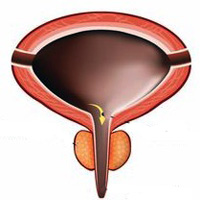Is there a relationship between renal scarring and neutrophil-to-lymphocyte ratio in patients with vesicoureteral reflux?

Accepted: October 28, 2021
All claims expressed in this article are solely those of the authors and do not necessarily represent those of their affiliated organizations, or those of the publisher, the editors and the reviewers. Any product that may be evaluated in this article or claim that may be made by its manufacturer is not guaranteed or endorsed by the publisher.
Authors
Objectives: Vesicoureteral reflux (VUR) exacerbates the risk of renal scarring by establishing a ground for pyelonephritis. It is known that the inflammatory process is more influential than the direct damage caused by bacterial infection in the development of renal scars after pyelonephritis. Therefore, the present study aims to investigate the relationship between renal scarring and systemic inflammatory markers in patients with VUR.
Material and methods: Hundred and ninety-two patients (116 females, 76 males) diagnosed with VUR were divided into two groups based on the presence or absence of renal scarring and into three groups according to the grade of VUR (low, moderate and high). Neutrophil count, lymphocyte count, mean platelet volume (MPV) and neutrophil-to-lymphocyte ratio (NLR) were compared among the groups.
Results: Of the 192 patients, 102 had renal scarring. The age and gender distribution did not differ significantly between the groups with and without renal scarring (p > 0.05). However, the grade of reflux and lymphocyte count were significantly higher in the group with renal scarring (p < 0.05), and the NLR was significantly lower in the group with renal scarring (p < 0.05). The lymphocyte count was significantly higher (p < 0.05) and NLR was significantly lower in the high-grade VUR group (p < 0.05). However, MPV values did not differ significantly (p > 0.05) between the groups.
Conclusions: NLR can be used to predict renal scarring in patients with VUR, especially in the period of 3-6 months after the first attack of infection, and may even serve as a candidate marker for treatment selection. However, larger series and prospective studies are needed.
How to Cite
PAGEPress has chosen to apply the Creative Commons Attribution NonCommercial 4.0 International License (CC BY-NC 4.0) to all manuscripts to be published.

 https://doi.org/10.4081/aiua.2021.4.436
https://doi.org/10.4081/aiua.2021.4.436



